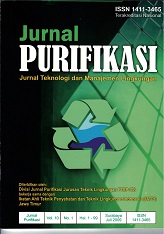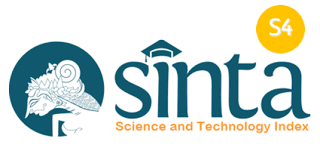CHROMIUM AND LEAD REMOVAL USING SYNTHESIZED NANOCRYSTALLINE ZEOLITE
Main Article Content
Abstract
Zeolite Y nanocrystal was synthesized from a clear solution at temperature of 80-1500C with 6.38 of Si/Al molar ratio by using Aluminum isopropoxide (Al(OiPr)3) and Ludox LS as alumina and silica source, Tetrametylammonium Hidroxide (TMAOH) and Tetrametylammonium Bromide (TMABr) as first and second organic template, respectively. The products were characterised by X-Ray Diffractometer (XRD) and Scanning Electron Microscopy (SEM) to identify the structure and particle sizes. The image measurements of the particle size record that the average particle sizes of FAU-5, FAU-20 and FAU-35 are 116.46 nm, 169.33 nm and 178.12 nm, respectively. Furthermore, 0.5988 g and 0.6001 g of yields with average particle sizes of 116.46 nm and 43.76 nm can be obtained for FAU-5 (single organic template) and FAU-10 (two organic template, TMABr/TMAOH=0.15) samples, respectively. The smallest average particle size observed is 33.87 nm (FAU-15). The synthesised nanocrystalline zeolite Y was applied for Pb(II) and Cr(III) removal and the results show that the nano crystal samples have very good performance. On FAU-37 at 10 ppm, 30 ppm, 50 ppm and 80 ppm of initial concentration, the adsorption of Pb is 23.56 mg/g, 109.71 mg/g, 181.02 mg/g and 231.46 mg/g, respectively at 216 h and adsorption capacities of Cr are 23.18 mg/g, 84.94 mg/g, 109.75 mg/g and 147.37 mg/g.
Downloads
Article Details
Submission of a manuscript to Jurnal Purifikasi means that the work has never been published in another journal and is not under consideration for publication elsewhere. The author hereby agrees to submit the copyright of the manuscript and its contents to Jurnal Purifikasi, if accepted for publication. Accepted manuscripts will be published in printed form where the ISSN is bound in printed form, not in online form (pdf). Authors are not allowed to publish their work in other forms (journals) without permission from the Jurnal Purifikasi manager.
By submitting a manuscript, the author is deemed to know all the rights and obligations attached to each manuscript.








